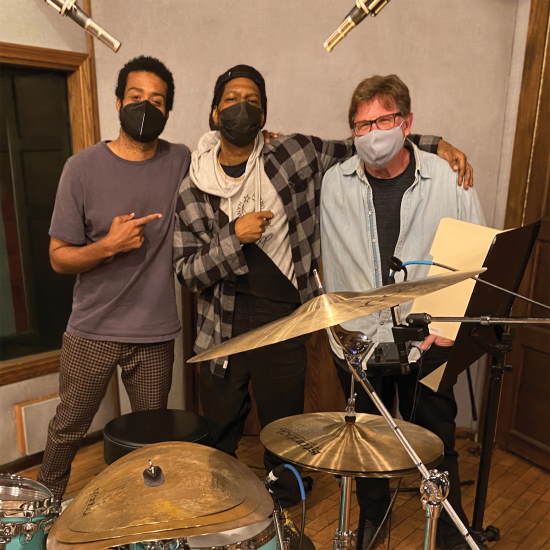Film Score Mixer Alan Meyerson Relies on Audio-Technica AT5045
A Cardioid Condenser Instrument Microphone

GRAMMY winner Alan Meyerson is a go-to mixer for many of the most prominent film composers of our era: Hans Zimmer, James Newton Howard, Henry Jackman, Ramin Djawadi, Danny Elfman and others. Meyerson’s credits include blockbuster movies like Man of Steel, Iron Man, Big Hero 6 (C.A.S. Award), 2019’s The Lion King, Dunkirk (C.A.S. Award), the Pirates of the Caribbean series, Sherlock Holmes: A Game of Shadows, Inception, The Dark Knight, Kung-Fu Panda, Despicable Me, The Last Samurai, Gladiator, Hannibal and many others. Outside of the world of film, his engineering/mixing credits include projects from Bryan Ferry, New Order, Etta James and OMD. Currently his base of operations is at Hans Zimmer’s Remote Control Productions complex in Santa Monica, where he has come to rely on a number of key pieces of gear, including the AT5045 Cardioid Condenser Instrument Microphone from Audio-Technica.
He notes, “My dear friend Al Schmitt, may he rest in peace, recommended AT5045’s to me, as he had just used them as drum overhead mics on a project with Steve Gadd. And my attitude has always been, ‘If it’s good enough for Al, it’s good enough for me!’ His recommendations were always on-point. And now they’ve become an integral part of my drum setup because they’re really clear and they’ve got an extended top end. I also love the fact that they’re easy to place – in a busy session, it can be frustrating work to get mic placement just right, but I don’t have to struggle with the AT5045. And it’s a nicely compact-sized mic, which just makes it all the more flexible to place in different situations.”
Meyerson finds the AT5045 equally adept at miking percussion and other instruments: “During recording sessions, we often refer to the ‘table,’ which is a station of shakers and other handheld percussion instruments that we mic in a stereo image. On one particular session, we had two tables, and I tried an experiment with using AT5045’s on one of the stations, since we had them there for drums. And they worked great. They’re just super-reliable. I have also used them on acoustic piano and acoustic guitar to great success. And different placements work great too, for instance a boom-line situation, where you point one up and one down and put them perpendicular to each other – you get a pretty incredible sound out of them that way. Or a tight X/Y is a great go-to as well. It’s a mic that’s sonically flexible, which I love.”
He describes the sound of the AT5045 as “open”: “I get a lot of top end without feeling like I’m getting a lot of top end, if that makes sense. It’s not too bright. It’s got a nice sense of air to it, and a lot of warmth. It has a big, nice frequency range. When you put two of them together in stereo, you get really great imaging that comes across as very natural to me. And that’s why they work so well as drum overheads, in my opinion. I like to use very little EQ in the recording process, and the AT5045 gives me what I need naturally. They’re just great mics, and I’m grateful to have them. I have a lot of microphones, but the AT5045’s get a lot of work from me.”